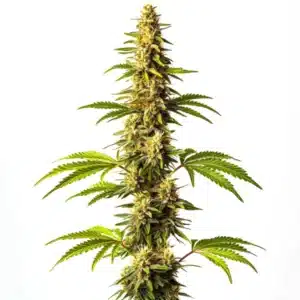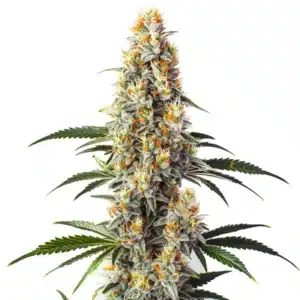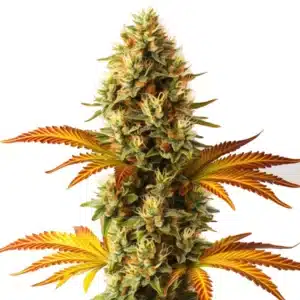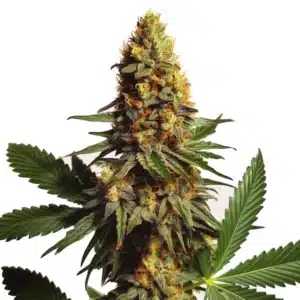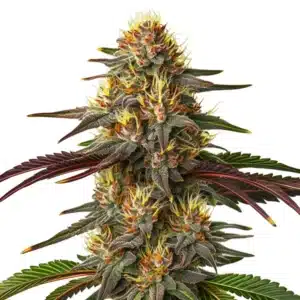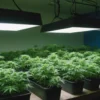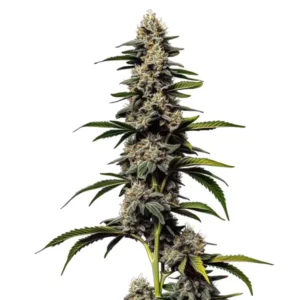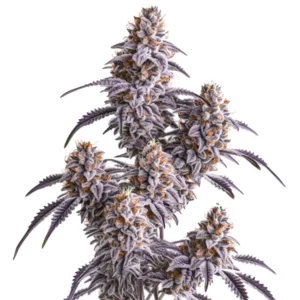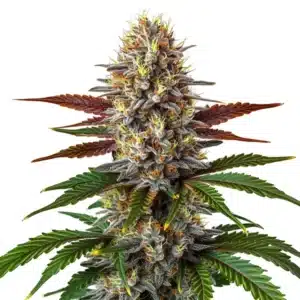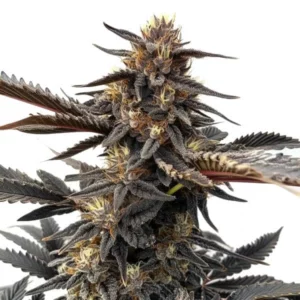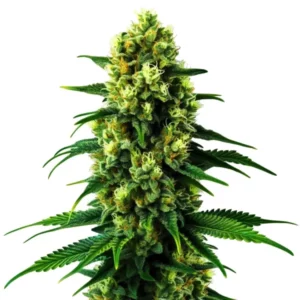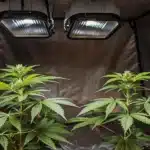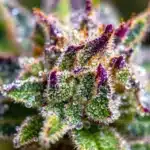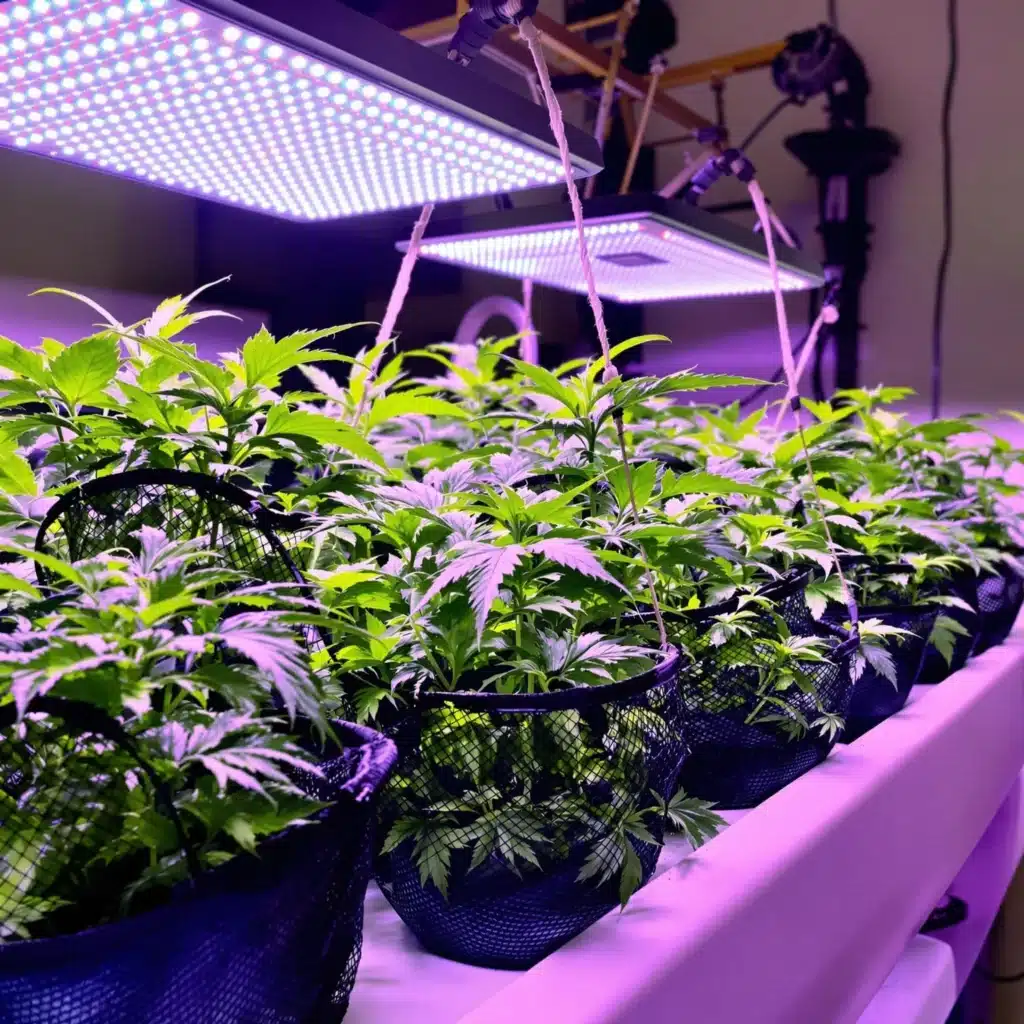
How to Grow Weed Indoors with Hydroponics
Growing cannabis indoors with hydroponics is a powerful way to achieve exceptional yields and superior-quality buds. By cultivating your plants in a soilless system, you give them direct access to nutrients and water, allowing for faster growth and better control. Learning how to grow weed indoors with hydroponics can seem daunting at first, but with the right setup and care, it becomes a rewarding experience for any grower.
What Is Hydroponics for Cannabis Cultivation?
Hydroponics is a method of growing plants without soil, using a nutrient-rich water solution to deliver essential nutrients directly to the roots. This efficient system allows cannabis plants to thrive by providing everything they need to grow without the limitations of traditional soil cultivation.
Recommended Strains
Super Critical
-
THC: 18% - 20%
-
Type of seed: Feminized
-
Phenotype: 30% Sativa / 70% Indica
-
Flavor: Herbal, Sweet
-
Day to flower: 8 - 10 weeks
Super Glue
-
THC: 16% - 19%
-
Type of seed: Feminized
-
Phenotype: 40% Sativa / 60% Indica
-
Flavor: Earthy, Pine, Woody
-
Day to flower: 8 - 9 weeks
Benefits of Hydroponic Systems for Indoor Growing
Hydroponic systems offer several advantages for cannabis growers. First, they allow for faster plant growth. Since nutrients are readily available to the roots, plants can focus their energy on developing foliage and flowers. Second, hydroponics gives you complete control over nutrient levels, pH, and water delivery, ensuring optimal growing conditions at all times.
Another significant benefit is the reduced risk of pests and diseases. Soil often harbors pests and pathogens, but with a hydroponic system, these risks are minimized. Additionally, hydroponics makes it easier to grow cannabis indoors, as it reduces the need for heavy bags of soil and simplifies the cleanup process.
Promos & Deals
Setting Up for How to Grow Weed Indoors with Hydroponic System
Getting started with hydroponics requires careful planning and the right equipment. By creating an efficient system, you set the stage for a successful cannabis grow.
Choosing the Right Hydroponic Setup
Several types of hydroponic systems are suitable for growing weed indoors. Some popular options include:
- Deep Water Culture (DWC): Plants grow in net pots suspended over a nutrient-rich water reservoir. Air pumps keep the water oxygenated.
- Ebb and Flow: Nutrient solution floods the grow tray at intervals, then drains back into the reservoir, ensuring roots are exposed to both water and air.
- Nutrient Film Technique (NFT): A thin film of nutrient solution flows over the roots, providing constant hydration and nutrients.
- Drip Systems: Nutrient solution drips onto the base of each plant, ensuring consistent delivery.
Each system has its advantages. Choose one based on your space, budget, and experience level.
Essential Equipment for Indoor Hydroponics
To grow weed indoors with hydroponics, you’ll need:
- Hydroponic system: Choose a setup that suits your grow space.
- Nutrient solution: A mix of essential nutrients tailored for cannabis plants.
- pH and EC meters: Tools to monitor water pH and nutrient levels.
- Grow lights: High-quality LED or HID lights to mimic sunlight.
- Air pump and stone: For oxygenating the water in systems like DWC.
- Timers: To automate watering and lighting schedules.
- Fans and ventilation: To maintain proper airflow and humidity levels.
Preparing Your Grow Space for Hydroponic Cannabis
Before setting up your hydroponic system, prepare your grow space to support healthy plant development. Ensure the area is clean, well-ventilated, and lightproof to prevent light leaks during the dark cycle. Use reflective materials on walls to maximize light efficiency, and position fans to promote air circulation.
Maintain a consistent temperature of 70-85°F and relative humidity between 40-70%, depending on the growth stage. Monitoring these factors ensures your cannabis plants remain stress-free and productive.
Selecting the Best Strains for Hydroponic Growing
The strain you choose plays a significant role in the success of your hydroponic grow. Some strains are more suited to hydroponic cultivation due to their growth habits and nutrient needs.
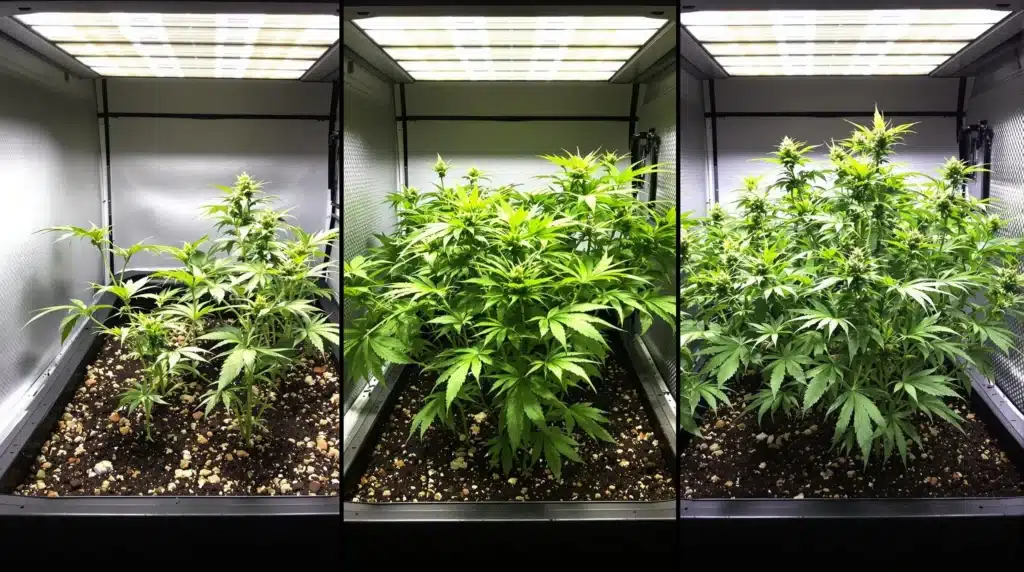
Indica Strains for Fast Growth and High Yields
Indica strains are ideal for growers looking for compact plants and quick flowering times. Popular options like Northern Lights and Critical Kush perform exceptionally well in hydroponic setups. Their robust nature makes them forgiving, while their dense buds yield a potent harvest.
Sativa Strains for Large Spaces and Long Cycles
Sativa strains, such as Super Silver Haze and Sour Diesel, thrive in hydroponic systems if you have the space to accommodate their tall growth. These strains require longer flowering times but reward growers with high yields and uplifting effects.
Hybrid Strains for Balanced Results
Hybrids like Blue Dream and Gorilla Glue Purple combine the best traits of indica and sativa. They are versatile, high-yielding, and adaptable to hydroponic systems. These strains are perfect for growers seeking a balance between growth speed and potency.
The Germination and Propagation Stage
Successfully starting your cannabis plants is vital for a productive hydroponic grow. This stage focuses on getting healthy seedlings or clones ready for hydroponic systems.
Starting Seeds for Hydroponic Systems
When germinating cannabis seeds for hydroponics, the process begins with the right environment. Follow these steps to ensure success:
- Choose Quality Seeds: Start with high-quality seeds from reputable sources to ensure strong genetics and high germination rates.
- Germination Medium: Use materials like rockwool cubes, which retain moisture and support root growth. Pre-soak the cubes in pH-balanced water (5.5-6.0) to prepare them.
- Maintain Humidity and Temperature: Place the seeds in a humidity dome or similar environment. Keep the temperature between 70-85°F and humidity around 70%.
- Lighting: Use a gentle light source, such as a fluorescent or LED grow light, to encourage sprouting without overwhelming the seedlings.
Once the seeds sprout and develop their first set of true leaves, they are ready to be transplanted into your hydroponic system. Learning how to grow weed indoors with hydroponics ensures a solid start for your plants.
Using Clones in Hydroponic Growing
Clones are an excellent choice for hydroponics because they guarantee consistent genetics and faster growth. Here’s how to prepare and plant clones in your system:
- Prepare the Clones: Dip the cut ends of the clones into rooting hormone to stimulate root development. Place them in a rooting medium, such as rockwool or peat plugs, and keep them under high humidity until roots develop.
- Monitor Root Development: Check for healthy, white roots emerging from the medium. This typically takes 7-14 days.
- Transplant into Hydroponics: Once the roots are well-established, transfer the clones to your hydroponic setup. Gently secure the rooted clone in a net pot and ensure the roots are in contact with the nutrient solution.
Clones simplify the process for growers who want uniform plants and predictable growth patterns. How to grow weed indoors with hydroponics becomes more efficient when using clones.
Nutrients and Feeding Schedule for How to grow weed indoors whit Hydroponic Weed
Hydroponic cannabis relies entirely on nutrient solutions, making it essential to provide the right balance of nutrients at every stage.
Nutrient Needs of Cannabis
Cannabis plants require a mix of macronutrients and micronutrients to thrive:
- Macronutrients: Nitrogen (N), phosphorus (P), and potassium (K) are the primary nutrients. Nitrogen supports vegetative growth, phosphorus aids in root and flower development, and potassium enhances overall plant health.
- Micronutrients: Elements like calcium, magnesium, sulfur, and iron are needed in smaller amounts but are just as critical for healthy growth.
Using a high-quality nutrient solution designed for hydroponic cannabis ensures your plants receive everything they need. Proper nutrition is critical for those learning how to grow weed indoors with hydroponics.
The Importance of pH Levels in Hydroponics
Maintaining the correct pH level is critical in hydroponics, as it affects nutrient absorption. Cannabis plants prefer a slightly acidic pH of 5.5-6.5. Use a pH meter to monitor levels regularly and adjust with pH up or down solutions as needed. Proper pH management is a key aspect of mastering how to grow weed indoors with hydroponics.
Adjusting Nutrient Levels for Each Growth Stage
Cannabis plants have different nutrient requirements during vegetative and flowering stages:
- Vegetative Stage: Focus on nitrogen-rich solutions to promote foliage and stem growth. Maintain an EC (electrical conductivity) level of 1.0-1.5.
- Flowering Stage: Shift to a phosphorus and potassium-rich formula to support bud development. Increase the EC level to 1.5-2.0.
Follow the manufacturer’s recommendations for nutrient concentrations and adjust based on plant health and growth. Adjusting nutrients effectively is a core practice in learning how to grow weed indoors with hydroponics.
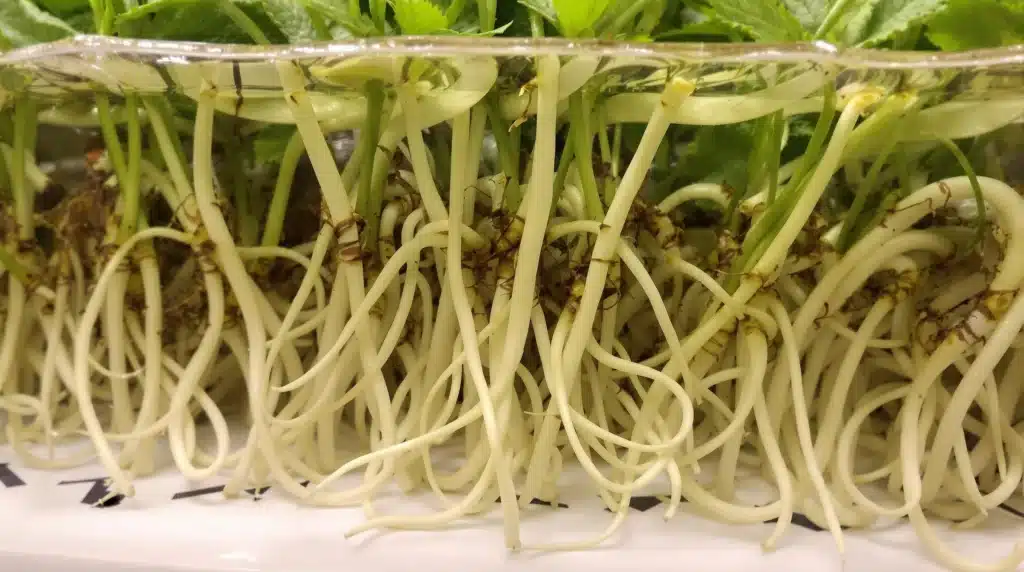
Lighting for Indoor Hydroponic Cannabis
Lighting is one of the most critical factors in hydroponic cannabis cultivation. Proper lighting ensures your plants grow strong, healthy, and productive.
Choosing the Right Grow Lights
The best grow lights for hydroponic cannabis include:
- LED Grow Lights: Energy-efficient and long-lasting, LEDs produce minimal heat and allow for customizable light spectrums. They are ideal for all stages of growth.
- HID Lights: High-intensity discharge (HID) lights, such as metal halide (MH) and high-pressure sodium (HPS), are powerful and effective but produce more heat and consume more energy.
- Fluorescent Lights: Suitable for seedlings and clones, fluorescent lights are gentle and affordable but lack the intensity needed for flowering.
Choose a light that suits your grow space and budget while ensuring it provides the intensity and spectrum needed for cannabis growth. Selecting the right grow lights is vital for mastering how to grow weed indoors with hydroponics.
Optimizing Light Cycles for Hydroponic Growth
Light cycles play a vital role in cannabis growth:
- Vegetative Stage: Provide 18-24 hours of light per day to encourage rapid growth.
- Flowering Stage: Switch to a 12-hour light/12-hour dark cycle to stimulate flowering.
Ensure your grow space is completely dark during the dark cycle, as light interruptions can stress plants and affect yields. Controlling light cycles effectively is a major part of learning how to grow weed indoors with hydroponics.
FAQS
What is hydroponics and how does it work for cannabis cultivation?
Hydroponics is a method of growing plants without soil by using a nutrient-rich water solution. For cannabis cultivation, this system allows plants to absorb nutrients directly through their roots, promoting faster growth and better yields. It eliminates the need for soil and provides growers full control over the plant’s nutrients, pH levels, and hydration.
What are the benefits of using a hydroponic system for growing cannabis indoors?
Hydroponic systems offer several advantages for indoor cannabis cultivation, including faster plant growth, better control over nutrients and pH, and a reduced risk of pests and diseases. They also make growing more efficient by eliminating the need for heavy soil and simplifying the cleanup process.
What hydroponic systems are best for indoor cannabis growing?
Popular hydroponic systems for cannabis include:
- Deep Water Culture (DWC): Plants are suspended in nutrient-rich water.
- Ebb and Flow: The nutrient solution floods and drains the grow tray at intervals.
- Nutrient Film Technique (NFT): A thin film of nutrient solution flows over the roots.
- Drip Systems: Nutrient solution is dripped onto the base of each plant.
The best choice depends on your space, budget, and experience level.
How do I select the right strains for hydroponic cannabis cultivation?
Strains like Indicas (e.g., Northern Lights, Critical Kush) are great for fast growth and compact plants. Sativas (e.g., Super Silver Haze, Sour Diesel) are ideal for larger spaces and longer cycles. Hybrid strains (e.g., Blue Dream, Gorilla Glue) offer a balance of both traits and are adaptable to hydroponic systems.
Why is controlling pH and nutrient levels important in hydroponic cannabis growing?
Maintaining the correct pH (between 5.5-6.5) ensures that cannabis plants can properly absorb nutrients. Each growth stage requires different nutrient levels: nitrogen for vegetative growth and phosphorus/potassium for flowering. Regularly monitoring and adjusting pH and nutrient levels is crucial for healthy plants and high yields.

